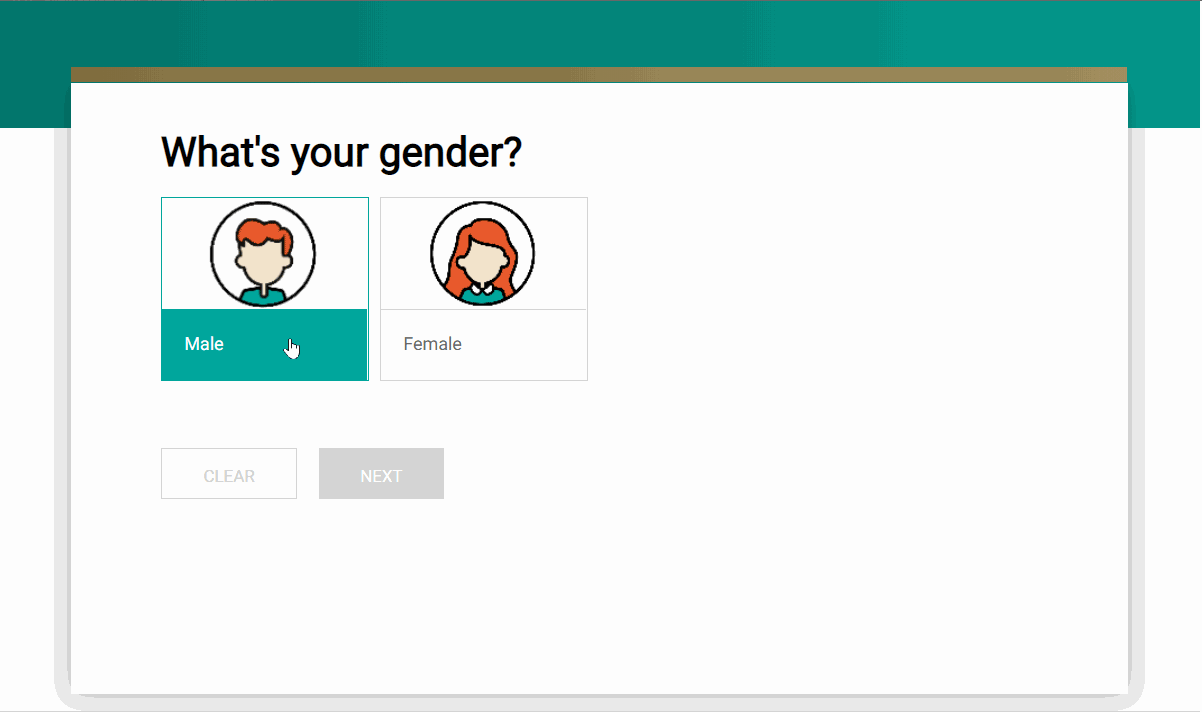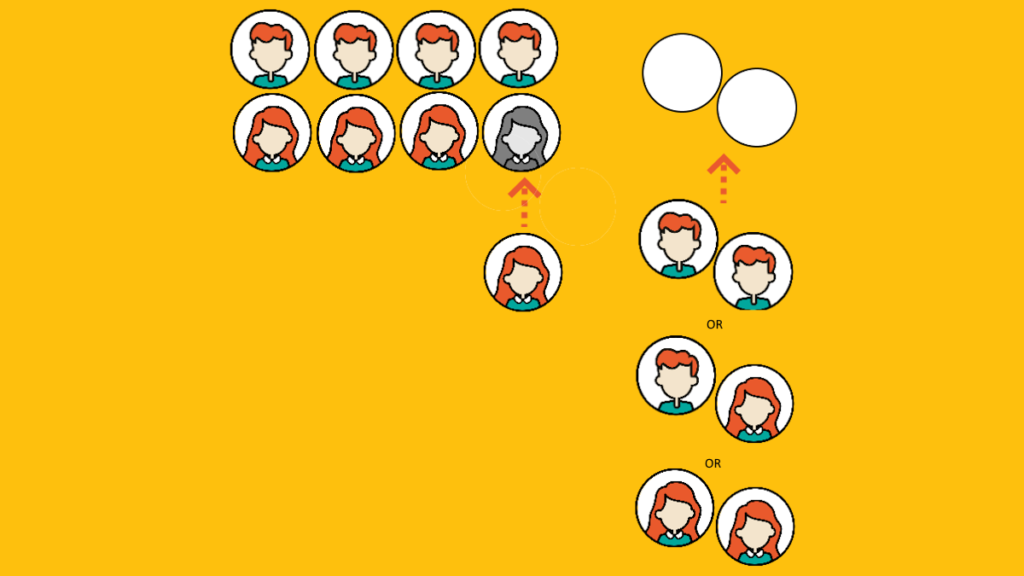Quota management is important in fieldwork management. It ensures you have a representative demographic distribution and a good control on the cost (sample fee, respondents’ rewards, Nfield complete fee, etc). It starts with a simple concept – You set a limit of how many completes (5 males + 5 females = 10 total) should be done to meet your quota requirement. In this article we introduce the quota basics and variations and how you manage your quota well.
We will use visual illustrations to show the quota concepts available in Nfield:
- – Minimum quota
- – Maximum quota
- – Least-filled quota
- – Multi quotas
Let’s start by creating an example for the basics using Minimum Quota.

At the end of the fieldwork, when you are missing one final interview (the 10th respondent) needed for the quota target there’s a chance you may not get this straightaway (a female in this case, see the image below). It would be a waste to interview respondents and keep screening them out (3 males in this example) before the last female respondent is found.
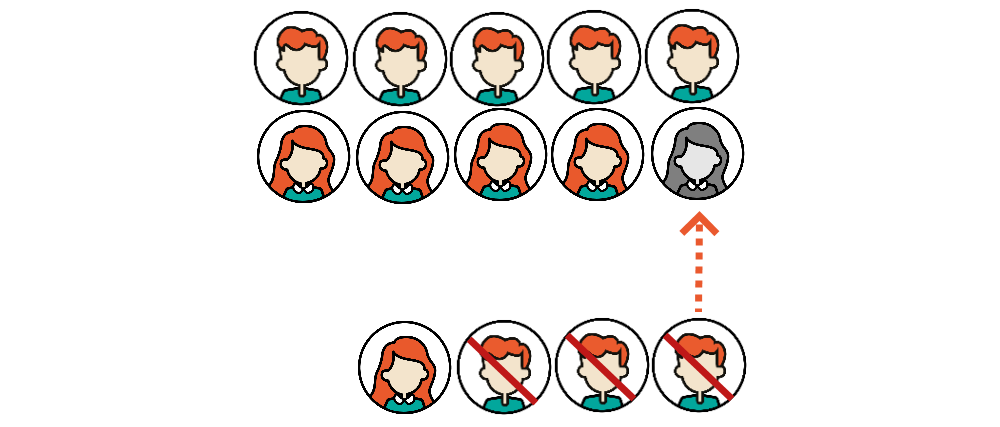
Minimum quota
When your quota requirements get more complicated (e.g. a female of 20-25 year old living in a small city who purchased a specific wine in the last year), we would need to screen out even more respondents. To have more flexibility in the quota design, you can make use of minimum targets.
In this example, we fixed 80% of the required gender distribution and left 20% of the sample free in the choice of gender. Anyone can take the final two spots (20%) of the target. The principle behind this¹ is to fulfil the minimum gender target (so one female spot in grey is reserved) and limit the total target by setting a maximum. So once the minimum targets are fulfilled, it is more flexible for accepting the last ones instead of screening them out.

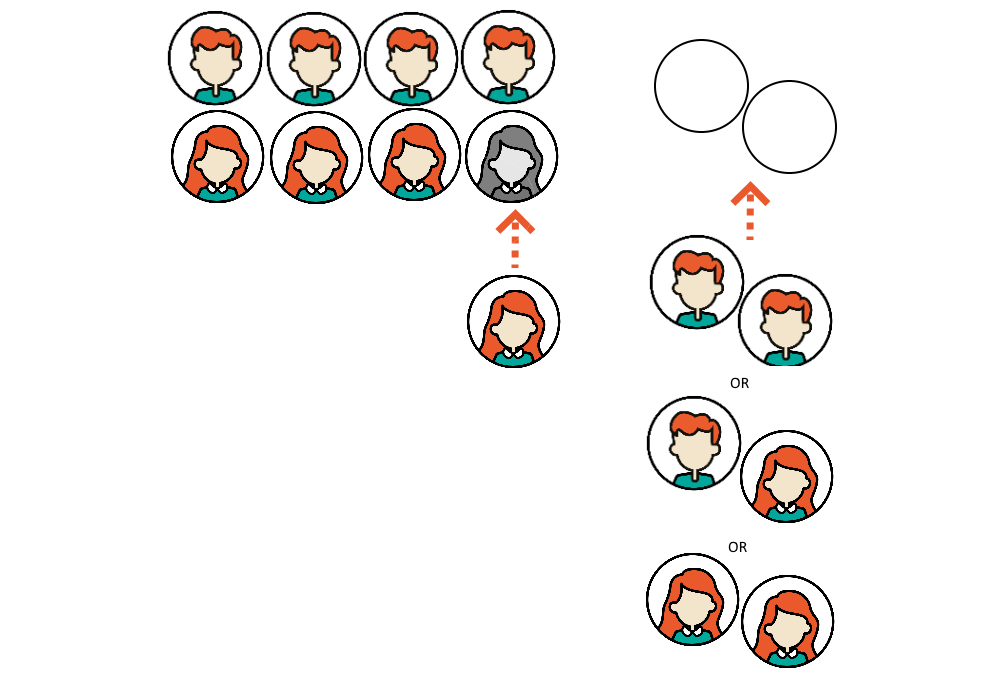
Benefits of this use of minimum targets are:
- It shortens the fieldwork period, no need to wait for the best-fit person.
- It does maintain a good demographic representation.
- It limits the amount, and possible cost, of sample that is used in the project, where members of this sample may be contacted only once in every three months.
- It saves on the sample cost where respondents who got screened-out get rewarded.
¹ Remarks: When it comes to a choice (overshoot due to concurrency issue), it is more important to fulfil the minimum target (4 male and 4 female) and relax on the maximum total target (so it is overshoot).
Maximum quota
Quota requirements can be complicated. You may have different quota cells, interlinking with each other. Some quota cells are more important than the others. Together with minimum targets, you can have good grip of your quota control.
We revise the minimum quota example with smaller minimum targets.

Nfield ensures 3 minimum males and 3 minimum females and has 4 spots to be filled in by anyone. In extreme cases, it can be 7 males or 7 females.
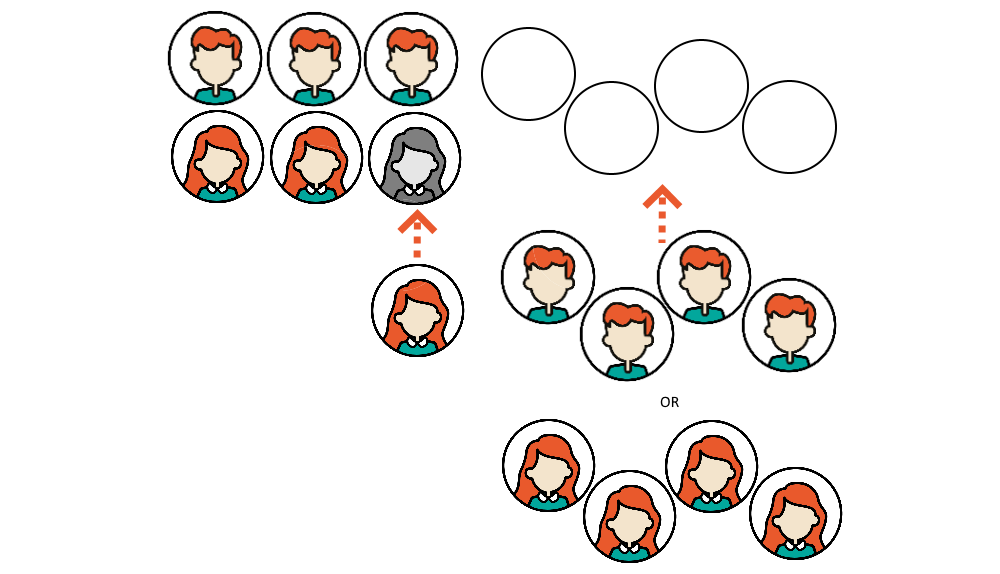
Having 70% males may seem too much. To add a control on this, maximum targets can be added on the quota cells.

To understand this, we now add a border (maximum target) on how many circles can sit in one gender row. 3 males and 3 females are minimum targets. They must be filled. The total maximum target is 10 (ten circles in total), meaning four circles/spots are available. However, only three circles can sit in one row (in the male row or the female row). Then you can have 3 to 6 males or 3 to 6 females, totaling 10.
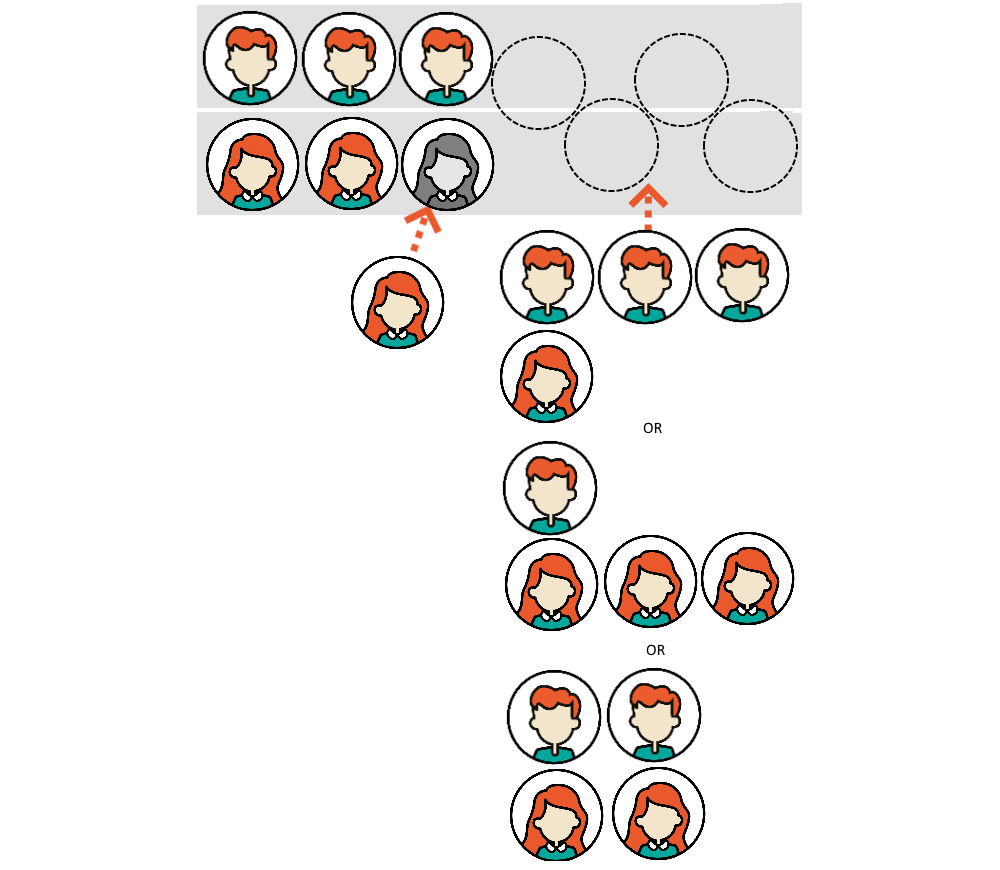
Benefits of a mix between minimum and maximum targets are:
- It keeps a minimum requirement on the demographic representation.
- It allows flexibility on the rest of the quota cells.
- The maximum targets can avoid extreme imbalances in the outcome.
Least-filled quota
This allows the survey to use routing based on the least-filled quota or offer selections based on a list ordered by least-filled quota. It helps lagging-behind quota to catch up by giving them advantages on higher position in the answer list or on routing to their sections. The following scenarios may sound familiar.
- A long questionnaire often is cut into sections and respondents are asked about only one of these sections to avoid boredom. To determine which section to show, a random test may be used. A random selection statistically makes an even distribution, especially when it is in a big-scale usage. However, in cases with imbalanced targets, you may need a better distribution method to fill all targets quicker based on least-filled quota instead of using a random selection.
- Sometimes, in the survey it is required to show a list on a question page to gear respondent selection towards the least-filled quota item.
The how-to is quite simple, with the use of command *GETLFQLIST (which literally means Get Least-Filled Quota List). It returns the quota list in its ascending relative filling percentage based on minimum target values. With the following example, the relative filling percentage is calculated like this: 3 completes on electric appliance kettle out of 5 targets, giving its relative filling percentage as 60%. The least-filled quota list will now show the order: Air conditioner (the least filled), refrigerator, kettle, and last television. You can then route your survey to show the section of the air conditioner.
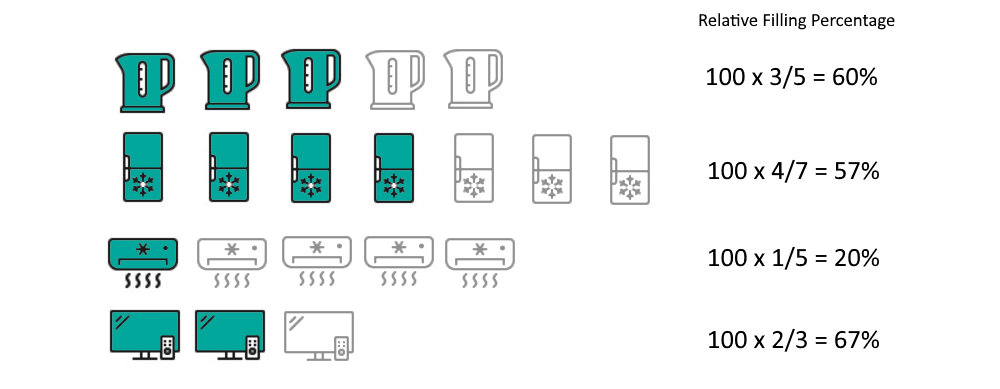
The most needed quota item gets answered first, resulting in earlier completion of the quota and saving costs by using less sample.
Multi quotas
Least-filled quota can apply to multiple quotas too. You may ask “Which electric appliances have you used yesterday?” or “Which brands you have purchased in the last months?” Respondents can give multiple answers. The questionnaire can route to show one/more section(s) of the least-filled answers (appliances/brands) of his/her answers. Or it shows a follow-up question with his/her answers in an ascending relative quota filling. The most demanding quota is at the top, which hopes to gear the respondent’s selection to that item.
In Nfield, you can toggle the “Multi” button on in the Quota page.
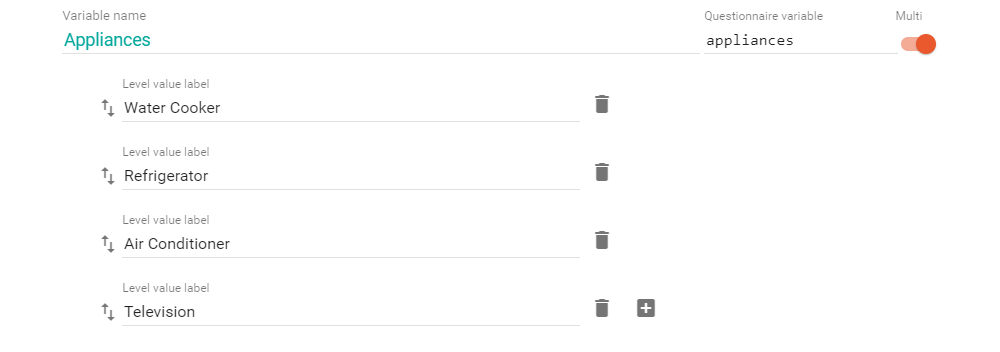
And multi quotas should always be at the root (thus the lowest in the nesting quota frame). It can be standalone, or nested under another quota cell, but not having other quota cells under it. As one respondent gives multiple answers, the counts would not sum up nicely. In the following example, the minimum target is 10 male and 10 female with a total of 20. These numbers are controlled gender quota variable, not in the minimum targets set for each appliance. The minimum targets in each appliance are used as the calculation of the relative filling which is 100% x (minimum target – number of respondents in that answer). Another important note is that the multi quotas do not contribute to quota check itself.
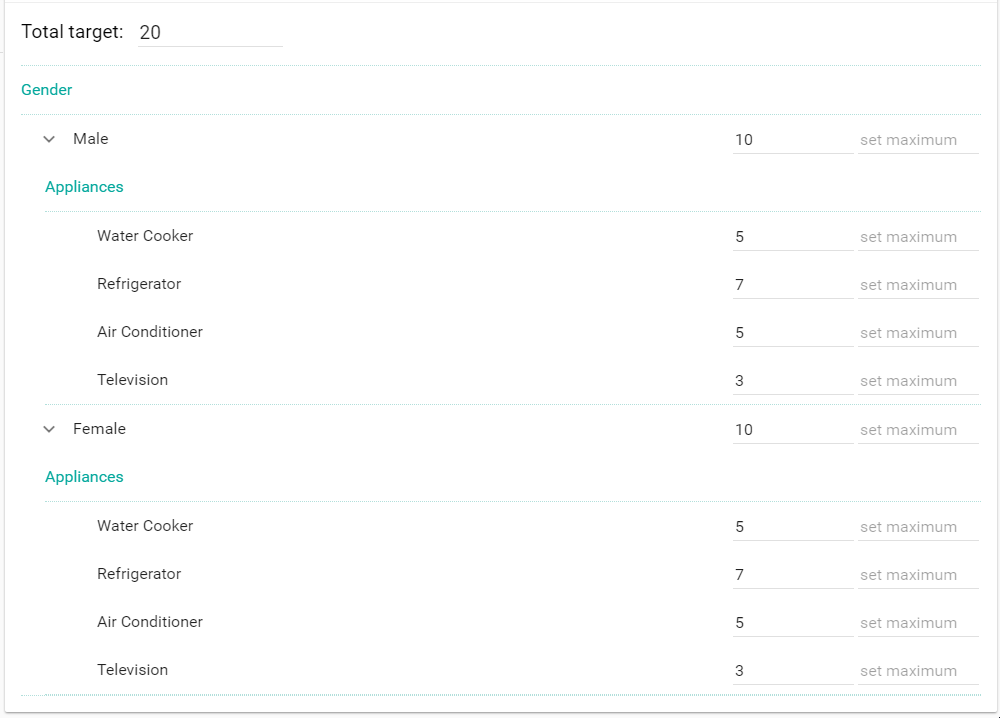
Then this *GETLFQList command can be used to return its result.
When the quota status is like the following (same as the example in least-filled quota), the relative quota filling in ascending order is air conditioner (20%, the least filled), refrigerator (57%), kettle (60%), and last television (67%).

See this in action:
